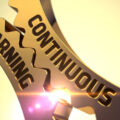
Experiencing job loss can be a significant setback, but it also presents an opportunity for personal and professional growth. By embracing change, assessing your skills and interests, setting long-term career goals, building a professional network, continuously learning, and remaining adaptable, you can build a strong foundation for long-term career growth. In this article, we will explore strategies that will help you navigate the journey towards building a thriving and fulfilling career after job loss.
Section 1: Embracing Change and Overcoming Setbacks
1.1 Shifting Your Mindset
Embracing change starts with shifting your mindset. Recognize that job loss is not a reflection of your worth or abilities, but rather an opportunity for new beginnings. Cultivate a positive and resilient mindset that allows you to bounce back from setbacks and approach challenges with a growth-oriented perspective.
1.2 Developing Resilience
Developing resilience is essential in overcoming setbacks. Focus on building your emotional strength, adapting to new circumstances, and bouncing back from adversity. Cultivate coping mechanisms such as practicing self-care, seeking support from loved ones, and maintaining a healthy work-life balance.
Section 2: Assessing Your Skills and Interests
2.1 Self-Reflection
Engage in self-reflection to assess your skills, interests, and values. Reflect on your past experiences, accomplishments, and the tasks that bring you joy and fulfillment. Identifying your core strengths and interests will help you align your career choices with your passion and purpose.
2.2 Identifying Transferable Skills
Identify transferable skills that can be applied to various industries and roles. These skills, such as communication, problem-solving, and leadership, can serve as a strong foundation for your career growth. Highlight them in your job applications and leverage them to excel in new opportunities.
Section 3: Setting Long-Term Career Goals
3.1 Defining Your Vision
Define your long-term career vision. Visualize where you see yourself in the future and what you want to achieve professionally. Set a clear direction for your career and use it as a guiding light to make informed decisions and stay motivated during your journey.
3.2 Setting SMART Goals
Set SMART (Specific, Measurable, Achievable, Relevant, Time-bound) goals that align with your career vision. Break down your long-term goals into smaller, actionable steps. These milestones will provide a roadmap for your progress and allow you to track your achievements along the way.
Section 4: Building a Professional Network
4.1 Networking Strategies
Build a professional network by attending industry events, joining relevant organizations, and engaging with professionals in your field. Networking can lead to valuable connections, mentorship opportunities, and access to hidden job opportunities. Cultivate genuine relationships and leverage your network for support and career growth.
4.2 Leveraging Online Platforms
Utilize online platforms such as LinkedIn to expand your professional network. Create a compelling profile that highlights your skills, experiences, and career aspirations. Actively participate in industry-related discussions, share valuable insights, and connect with professionals who can provide guidance and support.
4.3 Mentorship and Guidance
Seek mentorship from experienced professionals who can offer guidance and support as you navigate your career path. Mentors can provide valuable insights, share their experiences, and help you make informed decisions. Look for mentorship opportunities within your network or through formal mentoring programs.
Section 5: Continuous Learning and Upskilling
5.1 Embracing Lifelong Learning
Commit to lifelong learning and embrace opportunities to expand your knowledge and skills. Stay updated on industry trends, technologies, and best practices. Engage in self-directed learning through online courses, webinars, workshops, and industry-related publications.
5.2 Pursuing Professional Development
Invest in your professional development by pursuing certifications, attending conferences, or obtaining advanced degrees. Develop expertise in areas that are relevant to your career goals and demonstrate your commitment to continuous growth and improvement.
5.3 Expanding Your Knowledge Base
Broaden your knowledge base by exploring interdisciplinary subjects related to your field. Seek insights from other industries, as diverse perspectives can spark creativity and innovation. Engaging with new ideas and concepts will make you a more well-rounded professional.
Section 6: Adaptability and Flexibility
6.1 Embracing Change
Cultivate adaptability and embrace change as a constant in your professional journey. Industries evolve rapidly, and being open to new ideas and approaches will allow you to stay relevant and seize emerging opportunities.
6.2 Seeking New Opportunities
Actively seek new opportunities for growth and advancement. Be open to taking on new responsibilities, projects, or roles that stretch your capabilities. By stepping outside your comfort zone, you can acquire valuable skills and experiences that contribute to your long-term career growth.
6.3 Navigating Career Transitions
Stay agile and navigate career transitions with confidence. Develop a flexible mindset that enables you to pivot and adapt when necessary. Seek guidance from mentors, leverage your network, and be proactive in seeking new opportunities aligned with your evolving goals.
Conclusion
Building a strong foundation for long-term career growth after job loss requires embracing change, assessing your skills and interests, setting long-term goals, building a professional network, continuously learning, and remaining adaptable. By implementing these strategies, you can pave the way fora successful and fulfilling career journey. Remember, job loss can be a stepping stone towards discovering new opportunities, reinventing yourself, and achieving long-term career growth.










